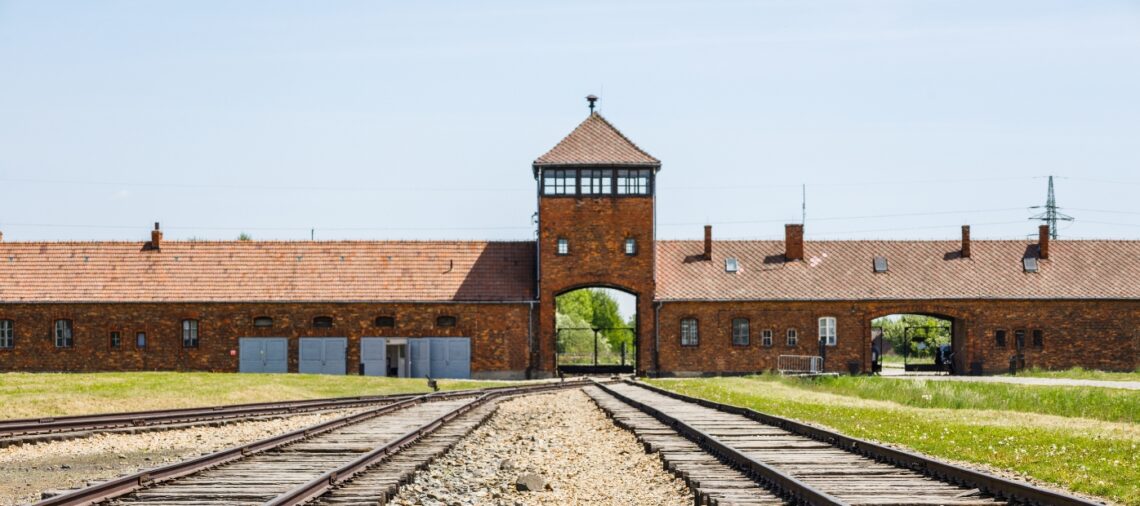As you enter the gates of Auschwitz-Birkenau, the ex-concentration camp in Oświęcim, Poland, the weight of history and the enormity of the tragedy that unfolded here hangs heavy in the air. Amidst the somber atmosphere, it is crucial to remember the importance of respect and sensitivity. While it may seem obvious, certain actions should never be taken at this memorial site. By disregarding these principles, you risk dishonoring the memory of the victims and undermining the purpose of this sacred place. So, before you step into this haunting reminder of the darkest chapters in human history, let us guide you through what not to do, ensuring that your visit is one of remembrance and reflection.
Do Not Dress Inappropriately
When visiting Auschwitz-Birkenau, it is crucial to dress appropriately out of respect for the victims and the solemnity of the site. Auschwitz-Birkenau is not just a tourist attraction; it is a place of immense suffering and tragedy. As such, visitors must follow certain rules and guidelines to ensure a respectful experience.
First and foremost, it is important to dress in a manner that reflects the gravity of the site. Avoid wearing clothing that is too casual or revealing. This means no shorts, tank tops, or flip-flops. Instead, opt for modest and respectful attire, such as long pants or skirts and shirts that cover the shoulders.
Remember that Auschwitz-Birkenau is a place of remembrance and reflection. Treating it as a photo opportunity or a fashion show is inappropriate. Avoid wearing clothing with offensive or inappropriate slogans or graphics. This includes anything that could be seen as disrespectful or trivializing the Holocaust.
Do Not Take Selfies or Pose for Photos
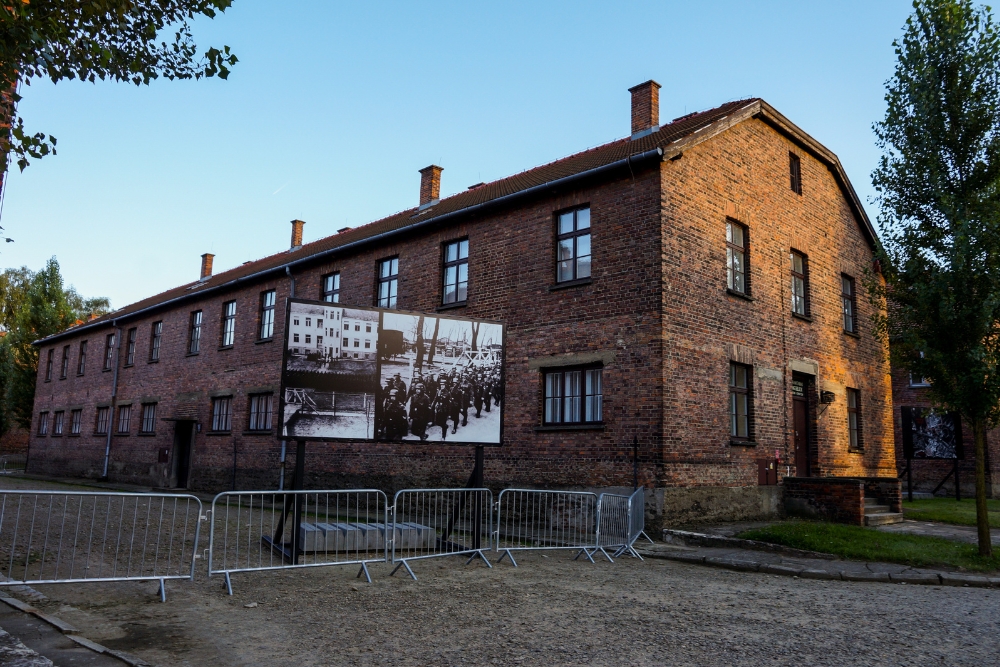
To truly honor the victims and maintain the solemnity of Auschwitz-Birkenau, it is essential to refrain from taking selfies or posing for photos at the site. Auschwitz-Birkenau was a Nazi concentration camp during the Holocaust, where over a million innocent lives were lost. It is a place of immense historical significance and serves as a reminder of the atrocities committed during World War II. The Auschwitz Museum, which now stands on the grounds of the former camp, serves as a memorial and educational institution dedicated to preserving the memory of the victims.
When visiting Auschwitz-Birkenau, it is crucial to approach the experience with respect and empathy. This means refraining from engaging in any activities that may trivialize or desecrate the memory of those who suffered and died there. Taking selfies or posing for photos could be seen as disrespectful and insensitive, as it fails to acknowledge the gravity of the site and the lost lives.
Instead, focus on paying your respects, reflecting on the tragic history, and educating yourself about the Holocaust. Participate in guided Auschwitz tours or visit the Auschwitz Museum to gain a deeper understanding of the events that took place in this place of unimaginable horror. By doing so, you ensure that the victims are remembered and their stories are told with the dignity and respect they deserve.
Do Not Make Loud Noises or Engage in Disruptive Behavior
Visitors to Auschwitz-Birkenau should refrain from making loud noises or engaging in disruptive behavior to maintain a solemn atmosphere and show respect for the victims. Auschwitz-Birkenau holds a significant place in history as one of the most notorious concentration and extermination camps during the Holocaust. It stands as a haunting reminder of the unimaginable suffering endured by millions of innocent people at the hands of the Nazis. The camp witnessed countless atrocities committed against individuals based on their race, religion, and political beliefs.
To fully comprehend the gravity of what occurred at Auschwitz-Birkenau, it is crucial to approach the site with the utmost sensitivity and reverence. The silence enveloping the camp allows visitors to reflect on the survivors’ immense loss and resilience. Making loud noises or engaging in disruptive behavior not only disrupts the solemnity of the place but also disrespects the memory of those who perished.
Do Not Touch or Remove Any Artifacts or Personal Belongings
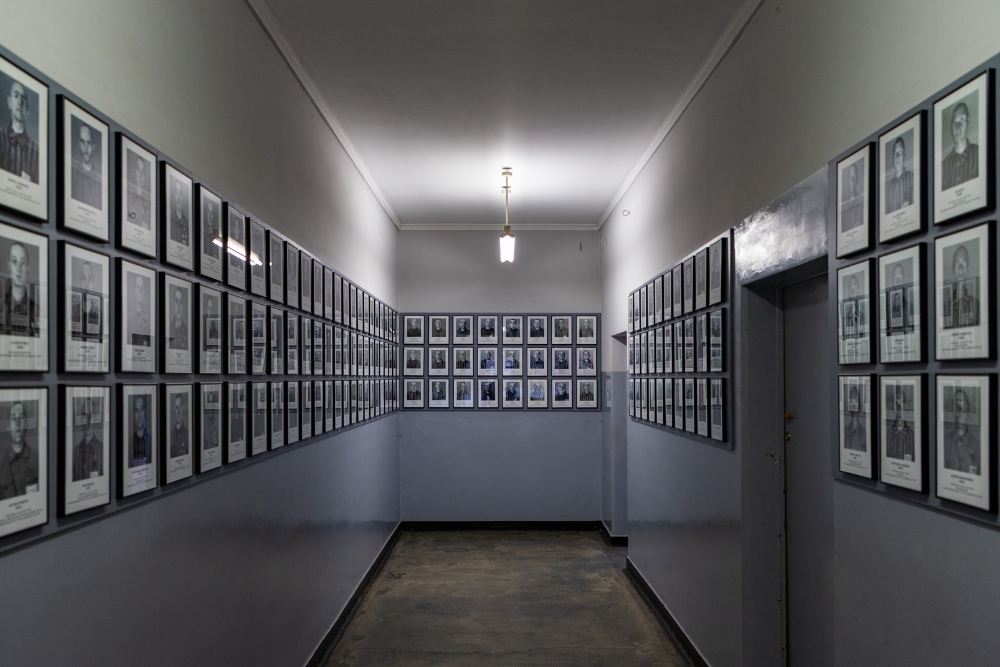
Maintaining the solemn atmosphere and showing respect for the victims extends to refraining from touching or removing any artifacts or personal belongings at Auschwitz-Birkenau. As a visitor to this solemn Holocaust memorial, it is crucial to understand the significance of these artifacts and personal belongings. Each item represents a life that was lost during the atrocities of World War II. By refraining from touching or removing these items, you are honoring the memory of those who suffered and died during the Holocaust.
The artifacts and personal belongings found at Auschwitz-Birkenau serve as a stark reminder of the horrors that took place within these walls. They provide a tangible connection to the victims and their stories. It is important to remember that these items hold immense emotional value to survivors and their families. Touching or removing them disrespects the memory of those who perished and the experiences of those who survived.
Do Not Engage in Disrespectful or Insensitive Conversations
Engaging in disrespectful or insensitive conversations at Auschwitz-Birkenau undermines the solemnity of the memorial and shows a lack of empathy for the victims and survivors of the Holocaust. It is essential to remember that Auschwitz-Birkenau was a place of unimaginable suffering and death, where millions of innocent lives were brutally taken during the Holocaust. When visiting this memorial, it is crucial to approach conversations with sensitivity and respect.
Discussing trivial or inappropriate topics at Auschwitz-Birkenau not only disrespects the memory of the victims but also disregards the magnitude of the atrocities committed there. This site serves as a reminder of the horrors of the Holocaust and the importance of preserving the memory of those who perished.
Instead, engage in conversations that honor the victims and survivors. Share stories of resilience, bravery, and hope. Reflect on the lessons learned from this dark chapter in history and discuss ways to prevent such atrocities from happening again. By doing so, we can ensure that the memory of the Holocaust lives on and that the victims are never forgotten.
In pursuing freedom, we must remember the importance of empathy, compassion, and understanding. Let us use our words to promote unity, respect, and peace, both at Auschwitz-Birkenau and in the world around us.
Do Not Rush Through the Site Without Taking Time for Reflection
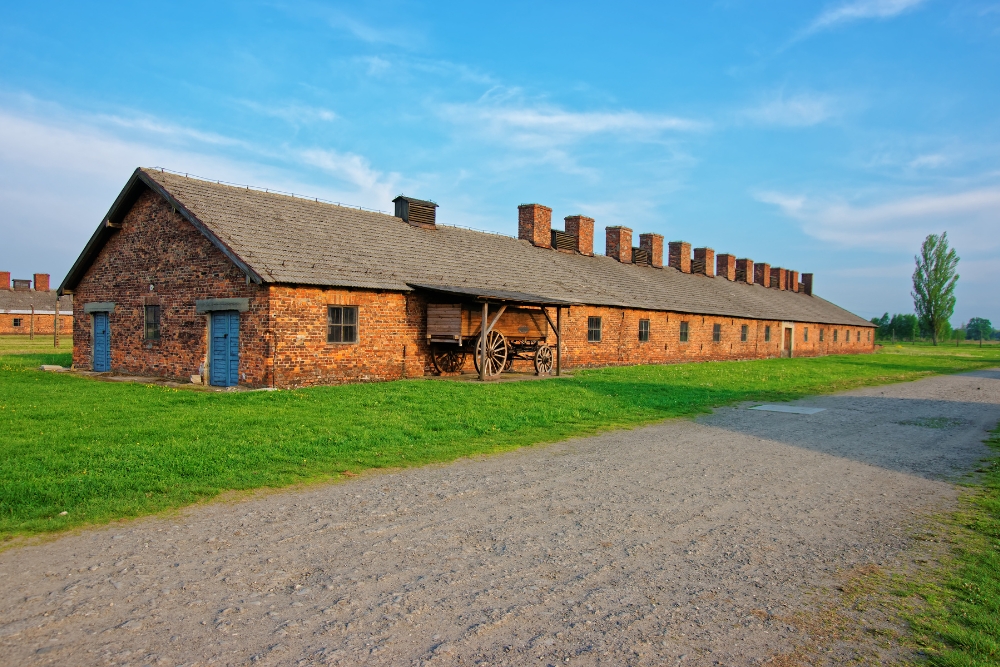
To fully appreciate the significance of Auschwitz-Birkenau, take the time to reflect and avoid rushing through the site. This memorial stands as a reminder of the horrors that occurred during the Holocaust, and it demands our utmost respect and attention. It is essential to approach this site with empathy and understanding, acknowledging the immense suffering here.
When you rush through Auschwitz-Birkenau, you risk missing the opportunity for deep reflection and connection with the past. This is a place where millions of innocent lives were lost, and it is crucial to honor their memory by taking the time to absorb the gravity of what happened here.
By slowing down and allowing yourself to be fully present, you can begin to grasp the magnitude of the atrocities committed within these walls. Take a moment to stand in the same spaces where countless individuals suffered and died. Reflect on the stories of those imprisoned here and try to imagine the fear, pain, and despair they endured.
Remember that visiting Auschwitz-Birkenau is not simply about checking off a tourist attraction from your list. It is about paying tribute to the victims and ensuring their stories are never forgotten. By taking the time to reflect, you can engage with history on a deeper level and help preserve the memory of those who perished.
Do Not Ignore the Tour Guide’s Instructions or Refuse to Follow the Designated Path
Ignoring the tour guide’s instructions or refusing to follow the designated path at Auschwitz-Birkenau undermines the purpose of the memorial and disrespects the memory of those who suffered and died there. The tour guides at Auschwitz-Birkenau are knowledgeable and experienced, providing visitors with valuable information and context to understand the atrocities that took place within those walls. By ignoring their instructions or straying from the designated path, you risk missing out on crucial details and insights that can enhance your understanding of the Holocaust.
The designated path at Auschwitz-Birkenau is carefully designed to guide visitors through the various areas of the camp, allowing them to witness firsthand the horrors that unfolded there. It ensures that visitors pay their respects in a respectful and dignified manner. Deviating from this path not only disrupts the flow of the tour but also shows a lack of empathy and understanding for the victims and survivors of Auschwitz-Birkenau.
Following the designated path is important not only for the memorial’s sake but also for your own safety. Auschwitz-Birkenau is a vast complex with fragile structures and sensitive areas. By straying from the designated path, you risk damaging the historical site and compromising the preservation efforts. Additionally, your safety may be compromised as certain areas may be dangerous or off-limits.
Ultimately, by ignoring the tour guide’s instructions or refusing to follow the designated path, you are undermining the purpose of Auschwitz-Birkenau as a memorial and disrespecting the memory of those who suffered and died there. It is essential to approach this site with empathy, respect, and a willingness to learn and understand the history that unfolded within its walls.
Do Not Treat the Site as a Tourist Attraction Rather Than a Place of Remembrance
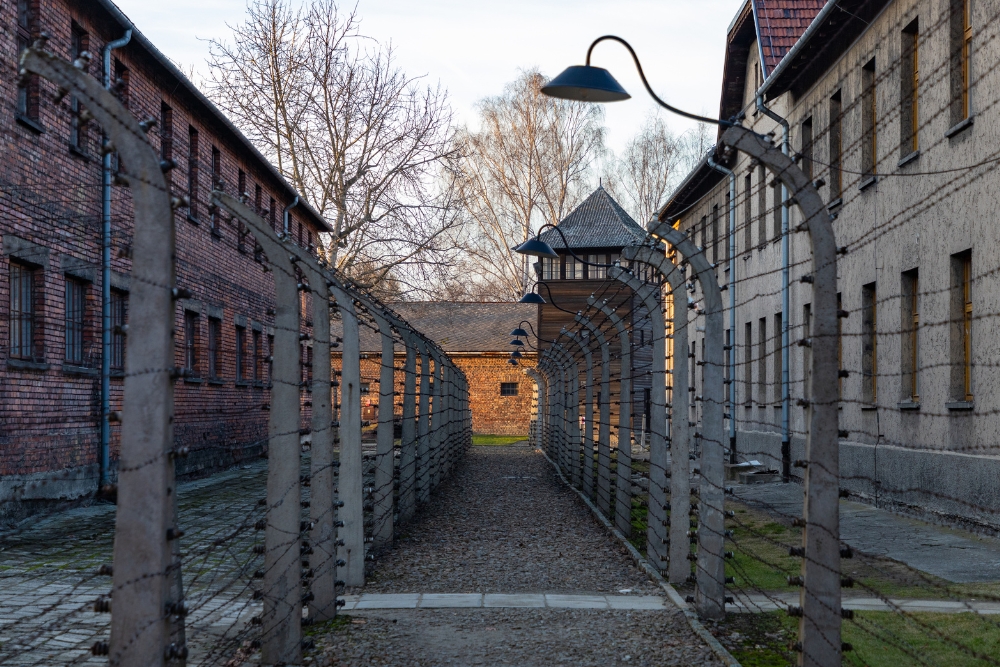
By failing to approach Auschwitz-Birkenau as a place of remembrance rather than a tourist attraction, the significance and solemnity of this memorial can be overlooked. It is essential to understand that Auschwitz-Birkenau is not just another tourist destination; it is a site of immense historical importance and serves as a somber reminder of the atrocities committed during the Holocaust. Treating it as a mere tourist attraction can be disrespectful and insensitive to the millions of lives lost and the suffering endured by the victims.
When visiting Auschwitz-Birkenau, it is crucial to remember that you are stepping onto sacred ground. This is a place where countless innocent lives were brutally taken away. It is not a place for selfies, loud conversations, or inappropriate behavior. Instead, it is a place that demands reverence, quiet contemplation, and reflection.
Approaching Auschwitz-Birkenau as a tourist attraction rather than a place of remembrance can lead to a trivialization of the horrors that occurred here. Remembering that this site represents the darkest chapter in human history is important. By treating it solely as a tourist destination, we risk forgetting the lessons it teaches us about the consequences of hatred, prejudice, and discrimination.
Therefore, when visiting Auschwitz-Birkenau, showing respect, empathy, and understanding is crucial. Take the time to educate yourself about the history and significance of the site. Listen to the stories of survivors, pay your respects at the memorials, and leave with a renewed commitment to promote peace and tolerance in the world. Let us honor the memory of those who perished by treating Auschwitz-Birkenau as a place of remembrance, not a tourist attraction.
Questions regarding a visit to Auschwitz-Birkenau
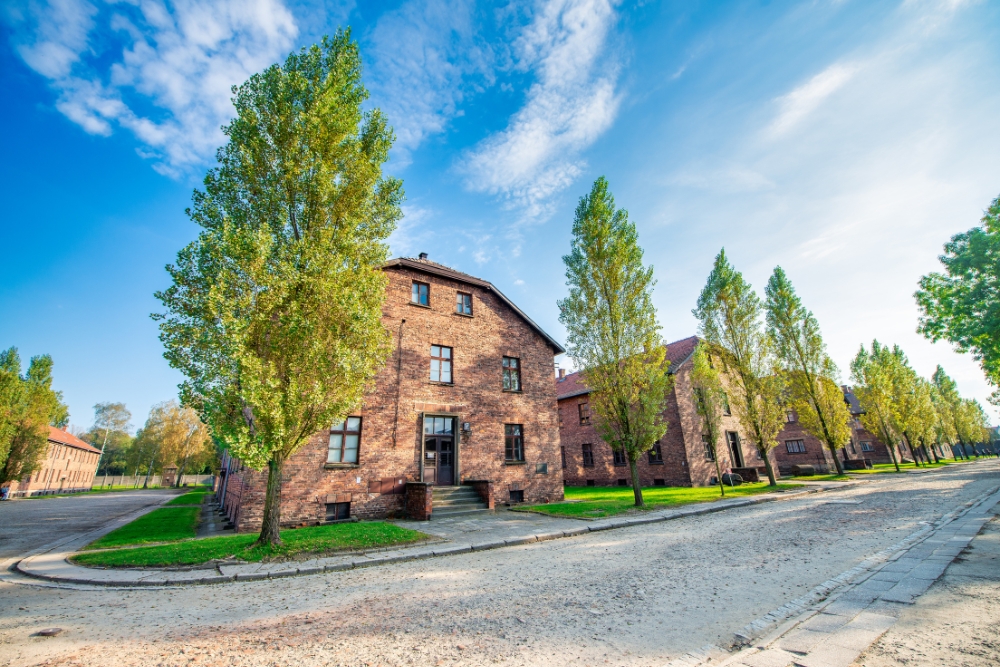
Are you planning a visit to Auschwitz-Birkenau? You may have questions about what to wear, whether you can buy lunch there, or explore the site on your own. It’s important to be respectful when visiting this memorial, so let’s address these common queries to ensure you have a meaningful experience.
Can you wear jeans to Auschwitz? Is there a dress code in Auschwitz?
Wearing jeans at Auschwitz is not recommended, as there is a dress code in place for visitors to show respect for the solemnity of the site. While there is no strict policy regarding specific clothing items, it is advised to dress modestly and appropriately.
Auschwitz-Birkenau is a place of immense historical significance and remembrance, where millions of innocent lives were lost during the Holocaust. The dress code aims to maintain the dignity and reverence of the site. It is important to remember that your visit is a chance to pay tribute to the victims and honor their memory. Opt for respectful attire, such as pants or skirts that cover the knees, shirts that cover the shoulders, and closed-toe shoes.
Can you buy lunch at Auschwitz?
Visitors to Auschwitz-Birkenau have the option to purchase lunch during their visit. While it may seem unusual to think about buying lunch at such a solemn and historically significant site, it is important to remember that Auschwitz-Birkenau is now a memorial and museum.
Lunch availability is a practical consideration, as visiting the site can be emotionally and physically demanding. Having the option to buy lunch allows visitors to take a break, replenish their energy, and continue their exploration of the memorial. However, it is essential to approach this option with sensitivity and respect. Remember that Auschwitz-Birkenau is a place of remembrance and reflection, and it is important to behave appropriately and maintain a somber atmosphere while enjoying your meal.
Can you walk around Auschwitz on your own?
When exploring Auschwitz-Birkenau, you can freely navigate the memorial grounds independently. This allows you to absorb the site’s significance at your own pace and reflect on the atrocities here. Walking around Auschwitz independently allows you to choose which areas to visit and spend more time at, allowing for a more personal experience.
However, it is important to remember that this is a place of remembrance and respect. While you have the freedom to explore, adhering to the rules and guidelines set by the Auschwitz-Birkenau Memorial and Museum is crucial. These rules are in place to ensure the site’s preservation and show respect for the victims. So, while you have the freedom to walk around Auschwitz on your own, it is essential to do so with empathy and understanding.
Is it worth going to Auschwitz?
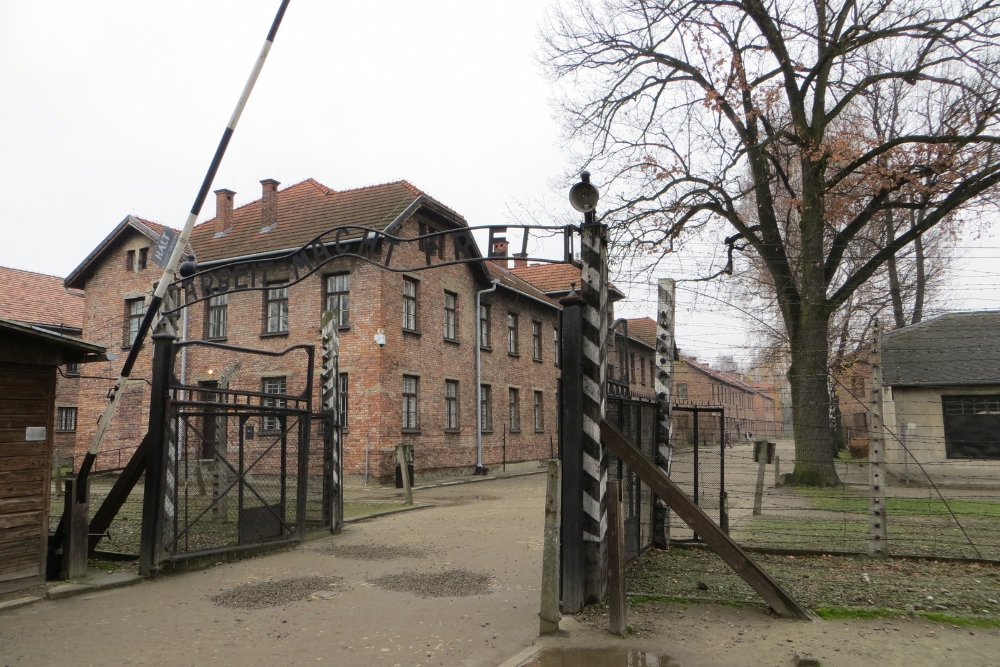
Deciding whether or not to visit Auschwitz-Birkenau is a deeply personal choice that requires careful consideration of its historical significance and the emotional impact it may have on you. Auschwitz-Birkenau is a symbol of the atrocities committed during the Holocaust, and visiting this site can provide a powerful and sobering experience.
It serves as a stark reminder of the horrors of genocide and the importance of preserving the memory of those who suffered. By walking through the camp and witnessing the remnants of the gas chambers, crematoria, and barracks, you can gain a deeper understanding of the magnitude of the crimes committed. However, it is important to be prepared for the emotional toll that a visit to Auschwitz-Birkenau may have. It is a solemn place that demands respect and reflection. Ultimately, the decision to visit Auschwitz-Birkenau is a personal one, and only you can determine if it is worth it for you.
How much is the entry fee for Auschwitz?
If you are considering visiting Auschwitz-Birkenau, you may wonder about this historical site’s entry fee. Entry to Auschwitz-Birkenau is free of charge. The Memorial and Museum were established to honor the victims and educate visitors about the atrocities committed during the Holocaust. The decision to waive the entry fee was made to ensure everyone has access to this important place of remembrance.
However, due to the high number of visitors, booking a guided tour in advance is necessary, which may involve a fee. The guided tours provide valuable context and information, enhancing the visitor’s understanding and experience. It is recommended to check the official Auschwitz-Birkenau website for the most up-to-date information on booking a guided tour and any associated fees.
Can you do a day trip to Auschwitz?
Planning a day trip to Auschwitz-Birkenau? Yes, you can visit Auschwitz on a day trip. Located in Oswiecim, Poland, the Auschwitz-Birkenau Memorial and Museum is easily accessible from major cities like Krakow. It is recommended to allocate at least 3-4 hours for the visit, considering the vastness of the site and the importance of taking time to absorb the historical significance.
Guided tours are available, providing valuable insights and context to the experience. Book your tickets in advance, as the entrance is regulated to manage visitor flow. It is crucial to approach the visit with respect and sensitivity, as Auschwitz-Birkenau is a place of immense tragedy and loss. Dress appropriately, be mindful of your behavior, and allow yourself to reflect upon the atrocities committed there.
Conclusion On What Not to Do at Auschwitz
In conclusion, when visiting Auschwitz-Birkenau, showing respect and sensitivity towards the site and its history is important. Remember to dress appropriately, refrain from taking selfies or engaging in disruptive behavior, and follow the tour guide’s instructions. One statistic that highlights the magnitude of the tragedy is the fact that over 1.1 million people, mostly Jews, were killed at Auschwitz-Birkenau during the Holocaust. This number serves as a visual representation of the immense loss and a reminder of the importance of preserving the memory of those who suffered.

